What does broccoli look like and how to grow such a cabbage?
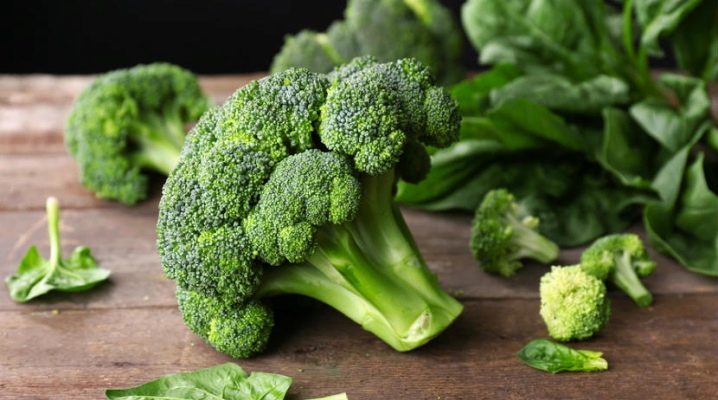
Broccoli is a very healthy product. Recently, self-cultivation of this crop has become popular. You can achieve very good results if you take proper care of such cabbage. In today's article, we will find out what broccoli looks like and how this vegetable is grown.
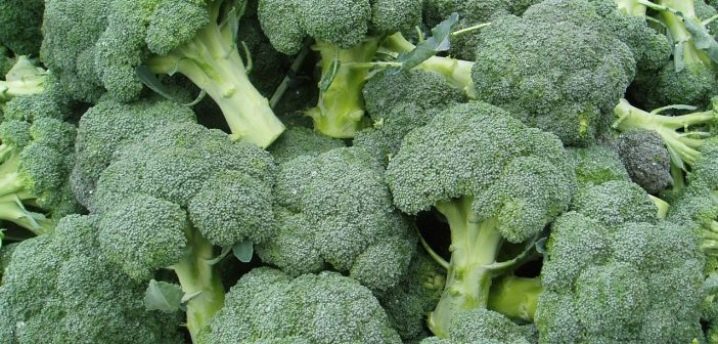
general description
Broccoli is a one-year plant. It comes from the Cabbage family and is a vegetable crop. The plant has many other names. So, among the people, broccoli is called stalk, asparagus or scion cabbage.
The herb in question can grow to a height of 1 m. Broccoli rhizomes are distinguished by good branching. The stem of this green plant is characterized by a cylindrical structure with very wide and large leaf plates. Often, the latter are distinguished by their upward placement. Cabbage foliage most often acquires an expressive dark green color. The leaf petioles are elongated.

Broccoli cabbage differs in that its varietal affiliation can be easily determined by looking at the type of leaf blades. The foliage of the culture is smooth, with an attractive sheen. There are also options that are characterized by deformed surfaces, curly edge areas.
The stem of the broccoli cabbage gradually moves to the head. The latter is always filled with inflorescences with a high density. If the apical inflorescence is carefully removed, it can effectively stimulate the active development of the lateral heads. Due to this, the total yield of the cultivated plant will also increase significantly.
The moment when cabbage blooms occurs at the beginning or middle of the autumn season. At this time, green cabbage begins to dissolve miniature yellow flowers. In rare cases, white flowers bloom. It is from these components that the fruit is formed in the form of a pod with two nests. At the same time, the seeds can have different sizes, brown-black colors. Most often, the seeds are large and have a rounded structure. The yield indicators of the crop in question can reach values of 12-15 kg for every 10 square meters.
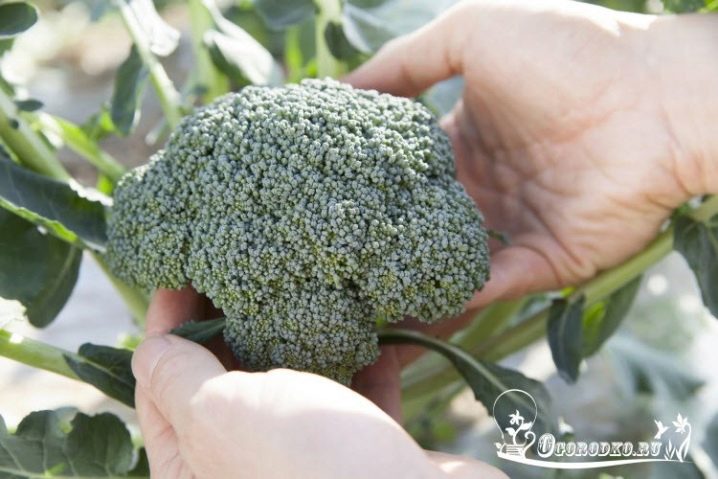
Varieties and hybrids
There are several varieties and hybrids of broccoli cabbage. Each of them has its own characteristics, looks different and requires some care. Let's take a look at some of the varieties of this popular culture.
Early ripe
Ripening of these types of broccoli cabbage usually occurs in a period of 50 to 100 days. Formed foods can be used for freezing.
- "Lord F1". One of the best varieties in terms of taste. Forms a very dense and strong stem, on which the head of cabbage is located, made up of green inflorescences. The mass of the latter can reach 800 g. After cutting, the heads of this variety form shoots on the sides, the inflorescences of which can reach up to 200 g in weight.
- "Tone". This variety can be sown multiple times throughout the season. "Tonus" is characterized by the fact that it is not afraid of frost. This variety does not require complex care, being completely unpretentious. The inflorescences here are able to bloom in a short time, so the heads of cabbage must be cut off in a timely manner.
- "Vyarus"... One of the earliest varieties of cabbage.It takes only 50-60 days from germination to technical maturity. The variety is very productive. The weight of the central head here can be up to 1 kg.
- "Linda"... The plant forms high-density heads of cabbage with a dark green color. Their mass is usually no more than 400 g. After cutting, lateral shoots grow very quickly.

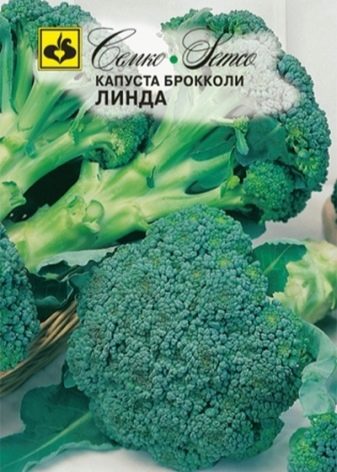
Mid-season
There are also mid-season broccoli cabbage varieties. The ripening period for these specimens can range from 105 to 130 days. It is allowed to store the harvested vegetables in the refrigerator or in the cellar, but not more than a month. In a frozen state, products will retain useful properties throughout the year.
- "Dwarf". The color of plants of this variety is gray-green. The culture can boast of frost resistance, gives a friendly and good harvest. Cabbage "Gnome" is perfectly stored. The plant is compact in size, not spreading. The weight of a head of cabbage in the center here is up to 600 g, and on the sides - up to 200 g.
- Ironman F1... A hybrid that produces an excellent harvest. The mass of inflorescences in the center can reach 600 g. The plant is unpretentious, resistant to many diseases and temperature jumps. Demonstrates pleasant taste.
- "Caesar"... The bush of this variety usually ripens within 95-115 days. It has a green color, has a slight wax-like bloom. The plant actively releases side shoots.
- "Arcadia F1". One of the most productive varieties, it is characterized by good keeping quality and excellent taste. The central inflorescences can have a mass of 450 g, and the lateral ones - up to 70 g.
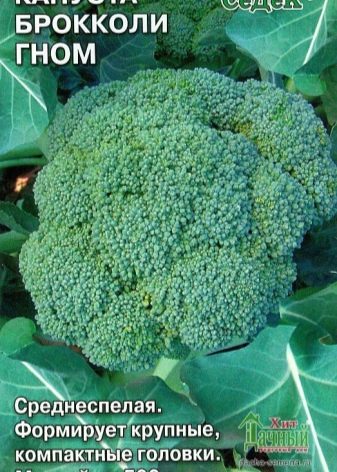

Late ripening
If a late-ripening broccoli variety was planted, then the harvest can only be harvested after 135-145 days after seedling formation. Late varieties are allowed to be kept in the cellar or in the refrigerator for no more than 2 months without losing their beneficial properties.
- "Marathon F1". A variety that survives frosts very easily and without problems. It is quite fruitful. The mass of the central head here usually reaches 800 g. The inflorescences are dense.
- "Akassi F1"... This variety produces central inflorescences up to 700 g. It is an ideal plant for southern regions, easily tolerates hot weather.
- "Continental"... The plant has a dense green head of cabbage. Its weight can reach up to 500 g. The variety tolerates sudden temperature changes without any problems, is not susceptible to various diseases, and is very good in storage.
- Romanesque. This variety can be identified immediately, since it differs sharply from all others in the structure of the head. In it, the inflorescences form original cones. When viewed from a distance, an adult bush can resemble a shell in its shape. Often this culture is used as a decorative one, since it is ideal for decorating elegant flower beds on the site. It cannot withstand sudden temperature changes, it is characterized by an amazing delicate taste. It should be noted that the variety in question is one of the richest in terms of the content of useful trace elements and vitamins.
The Romanesque variety can be kept fresh on the refrigerator shelf, but no longer than one week.

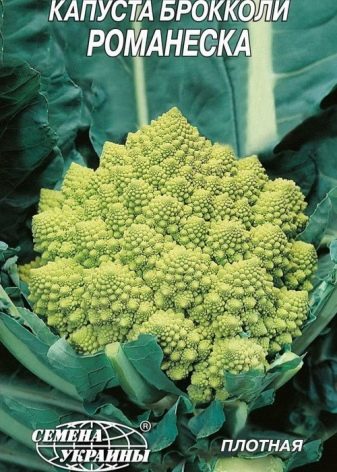
Red and stem
In our country, these varieties are practically not grown. In Europe and America, such species are cultivated.
- Early purple... The inflorescences of this plant are purple and bright. The variety has excellent taste.
- Santi. It ripens in 80-180 days. The plant heads have a lilac hue. The variety is suitable for cool weather conditions.
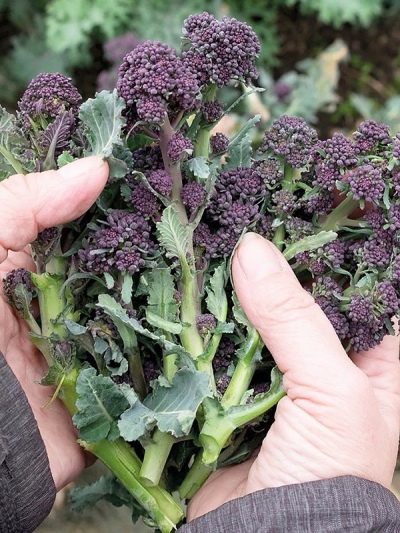
There are also Dutch and Brooklyn varieties of broccoli. The mass of the central head of such plants is rarely more than 600 g.
Sowing preparation
To grow strong and healthy plants, it is very important to properly prepare for future sowing. This requires choosing the largest possible seedlings. Elements that are too light and dry should not be used.
Before planting broccoli seeds directly, they must be properly hardened. To this end, they are kept for 15-20 minutes, first in a warm, and then in a cooler liquid. Before this, it is allowed to dilute 1 g of potassium permanganate in warm water for a disinfecting effect.
Upon completion of proper hardening, the seeds are sent to the Epin solution for 12 hours. Then the grains are taken from there and transferred to the refrigerator for a day.
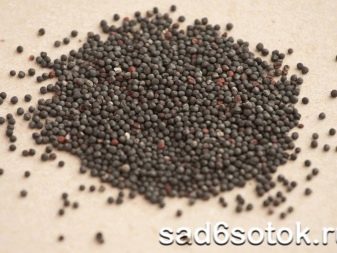
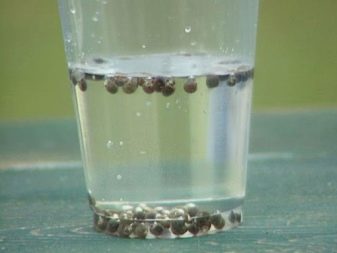
Landing
When the preparatory activities are left behind, it will be possible to proceed to the landing. Consider the main features of planting seedlings or directly seeds of broccoli cabbage.
Seedlings
To grow healthy seedlings, you will need to prepare large in width, but not too high containers. Wooden boxes, plastic cans, and so on will do.
Planting soil can be purchased at a store that sells everything for the garden and vegetable garden. It is also possible to make a good mixture for planting a vegetable on your own, taking in equal proportions:
- land from the garden;
- humus;
- peat;
- sand.
It is advisable to calcine the prepared soil mixture 10 days before planting in an oven at a temperature of 150 to 200 degrees Celsius. When the soil cools down, it will need to be watered with a weak solution based on potassium permanganate.
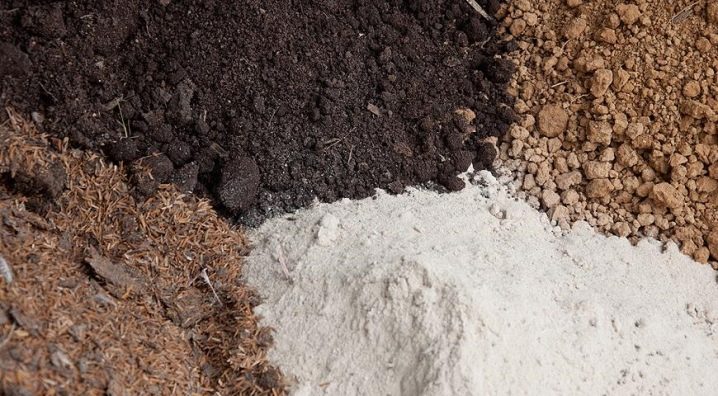
Next, seeds are planted in the finished mixture.
- A drain is placed at the bottom of the selected containers. Expanded clay or ceramic shards can be used as a suitable drainage layer.
- The prepared soil mixture of a suitable type is poured on top. This must be done so that an indent of 1.5-2 cm remains to the edges.
- Notches of 1.5 cm are made on the surface... Between them it is necessary to leave indents of 2.5-3 cm. Seeds are placed in these recesses, covered with earth and well crushed.
Transplanting seedlings, subject to proper care, can be carried out after 4.5-5 weeks. To do this, you need to choose a well-lit place. A square where legumes, potatoes, onions or carrots used to grow is ideal. The soil should not be acidic.
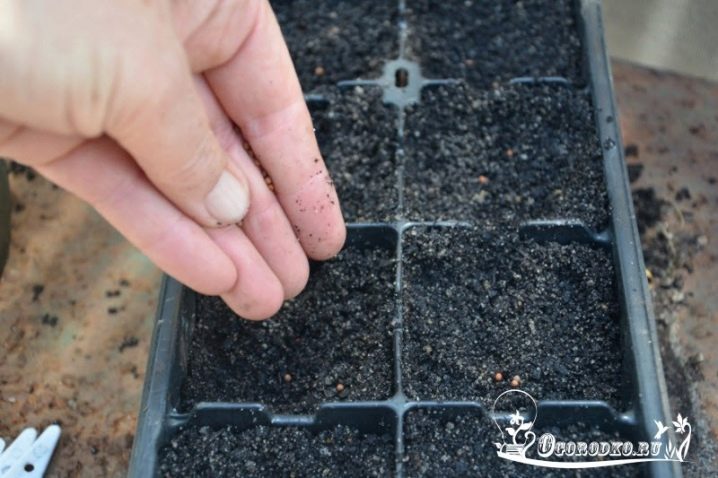
Seeds
You can also grow a vegetable using a seedless method. Seedlings are sent directly to the soil layer on the site. Before this, the soil is prepared, and not just the seedlings themselves. When ideal conditions are present, the seeds can be planted in a moist soil mixture. With the development of 2-3 leaves on seedlings, they are thinned out, keeping 35-40 cm between plantings.
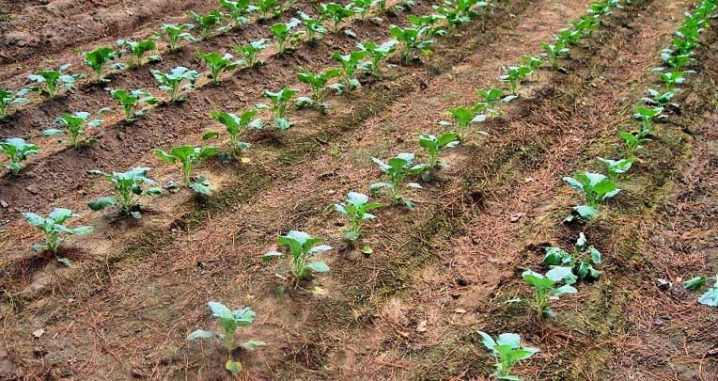
Care
Consider how to properly care for broccoli cabbage.
Watering
Moisten the soil should be based on the established weather. If the days are hot and dry, you need to moisten the planting at least 4-5 times a week. The soil must be loosened at the end of watering.
You can moisten plants with a spray bottle. If the cabbage lacks moisture, then its heads will be small, and the taste will decrease.

Top dressing
For the first time, fertilizers can be applied only after the appearance of the second leaf of the plant. If the seedling material has suspended its development, then it is allowed to feed it by dissolving 20 g of potassium chloride, 20 g of superphosphate, 20 g of ammonium nitrate in 10 liters of water.
The second time the plant is fed after transplanting seedlings, after 7-10 days. For this, a urea solution is suitable - 20-25 g per bucket of water. You can use an organic solution made up of a liquid combined with manure.
The third feeding is carried out against the background of the appearance of inflorescences. At this point, it is best to use superphosphate - 20 g per 10 liters of water.
The final fourth dressing will stimulate the growth of side shoots. In this case, the same compositions are used as during the third feeding.
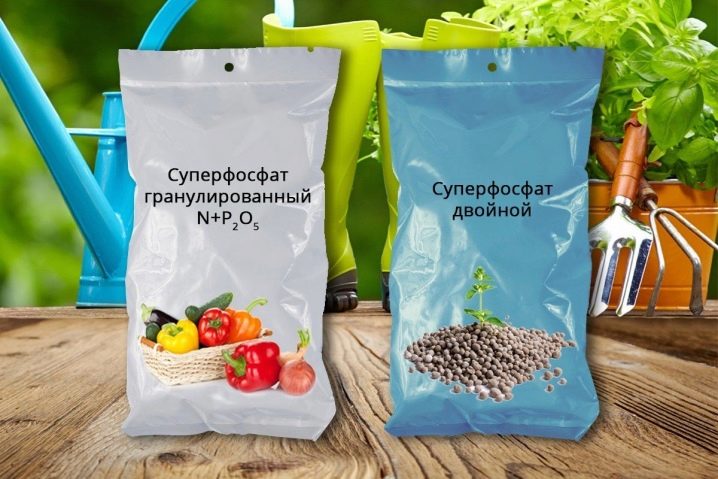
Diseases and pests
The main ailment that poses a great danger to broccoli cabbage is blackleg. This disease, in which rotting of the root system occurs, can seriously harm the plant.You can understand that the planting suffers from this serious ailment by the pale greenery. At the same time, the leaf blades can also become frankly lethargic, stunted. When the roots are removed from the soil, sunken rotten lesions of dark shades can be seen on them.
It is unlikely that it will be possible to overcome this ailment, since it is determined already at its advanced stages. That is why it is so important to devote time to preventive operations:
- it is required to disinfect both seedlings and soil;
- the soil mixture should be loosened regularly, removing all weeds;
- the plant needs to provide moderate watering;
- it is important to monitor crop rotation;
- you need to thin out the beds.
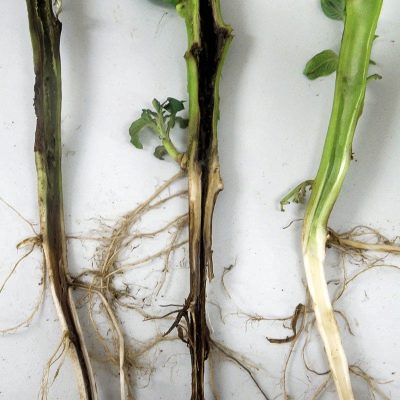
The most common attack on broccoli is caterpillars and slugs. You can fight these parasites using folk remedies.
- High efficiency is demonstrated by tinctures made from tops taken from tomatoes or potatoes. For this, 1/5 of a bucket of the crushed natural component is poured with water. The composition is boiled for 3-5 minutes, and then sent to a warm place for aging for a day.
- Many gardeners turn to the use of a solution made from tobacco dust, laundry soap and pepper. To make such a composition, you must mix 1 tbsp together. l. pepper, a handful of tobacco, 40 g of a soap component, 10 liters of liquid. These components should be infused for at least 2-4 hours. After that, the solution is filtered and the planting is sprayed with it. Before eating vegetables, you will definitely need to thoroughly wash them in water.
- Scare off annoying slugs quickly and effectively will succeed through crushed eggshell.
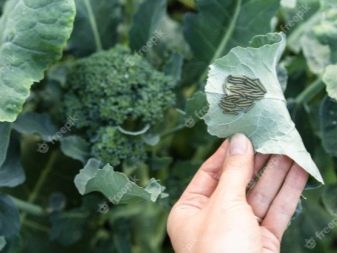
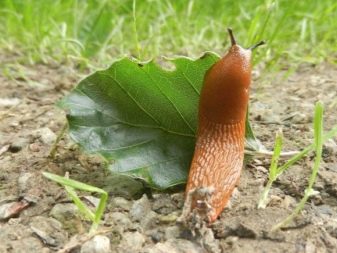
Harvesting and storage
The first harvest of cabbage can appear 12-16 weeks after sowing seeds.... It depends on the variety whether one head will ripen or the side heads will break through. It is not recommended to wait until the size of the cabbage heads reaches their maximum values. Because of this, cabbage often overripe and loses its initially good taste. Broccoli should be cut only in the morning so that the head of cabbage is saturated with juices to the maximum.
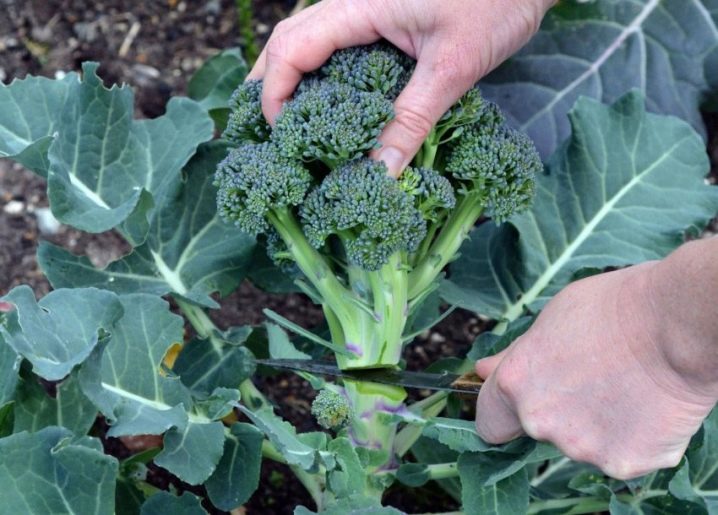
It should be borne in mind that cabbage heads in a loose state contain much less useful trace elements and substances, however, such units are prepared much faster. High-density inflorescences will require prolonged heat treatment, but they contain more vitamins.
The first cabbage heads harvested can be stored in the appropriate compartment of the refrigerator for up to a week. For the winter period, these products can be frozen, having previously disassembled into individual inflorescences.
Side-shot heads or later varieties will be ideal for conservation or cellar storage. At the same time, a temperature indicator of about 0 degrees Celsius will be comfortable.
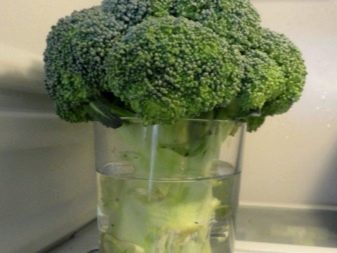
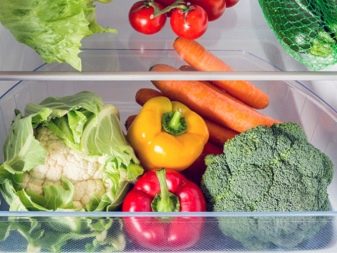
To clean the garden bed after harvesting, it will be necessary to carefully remove all crop residues from the soil. After that, they should be left here, on the surface of the earth. After a few weeks, small heads of broccoli will appear on the plant residues, which can be eaten. Such units are characterized by excellent taste.
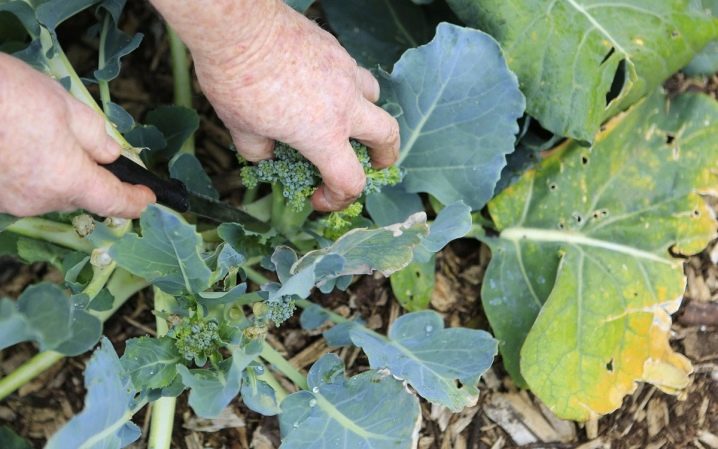













The comment was sent successfully.